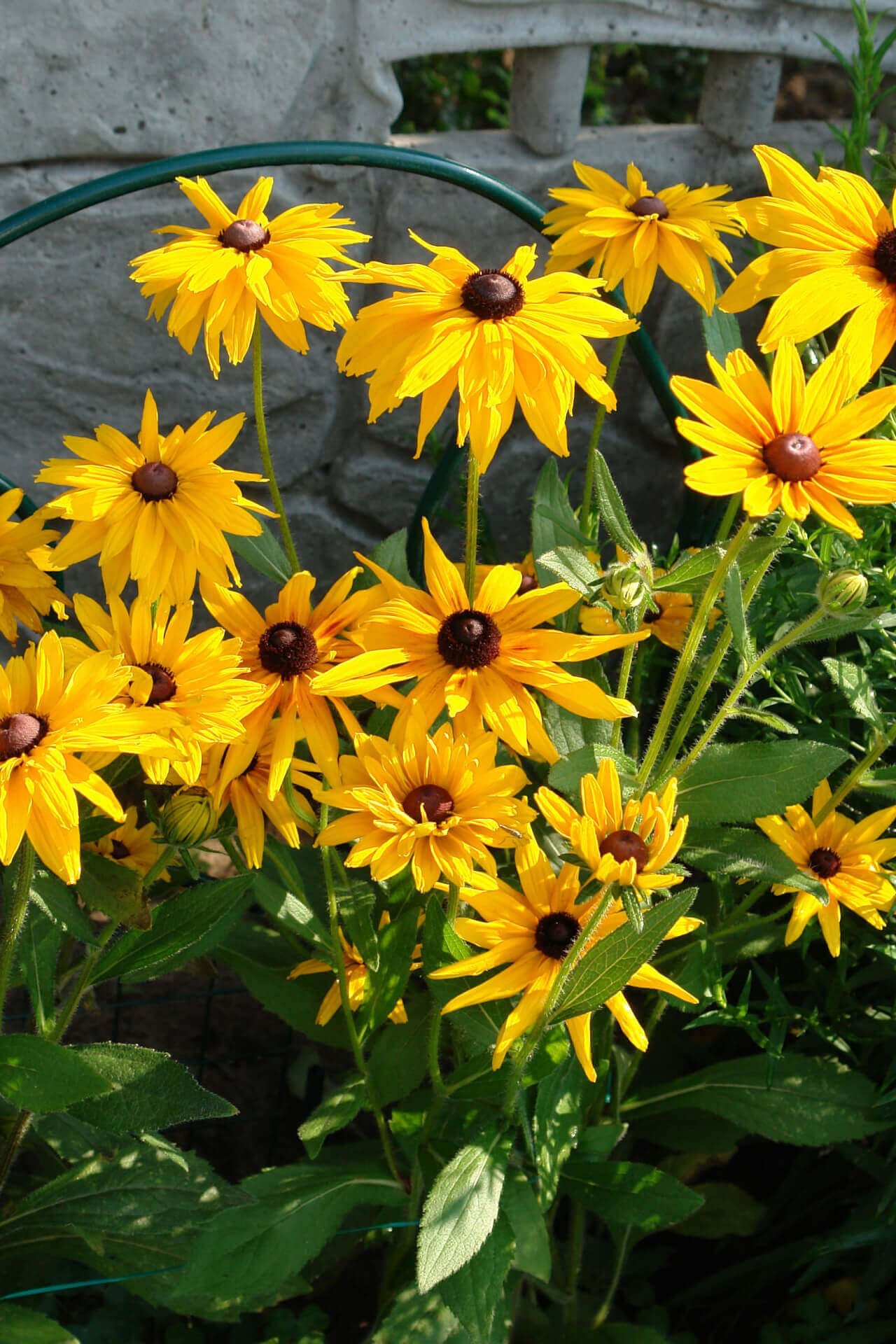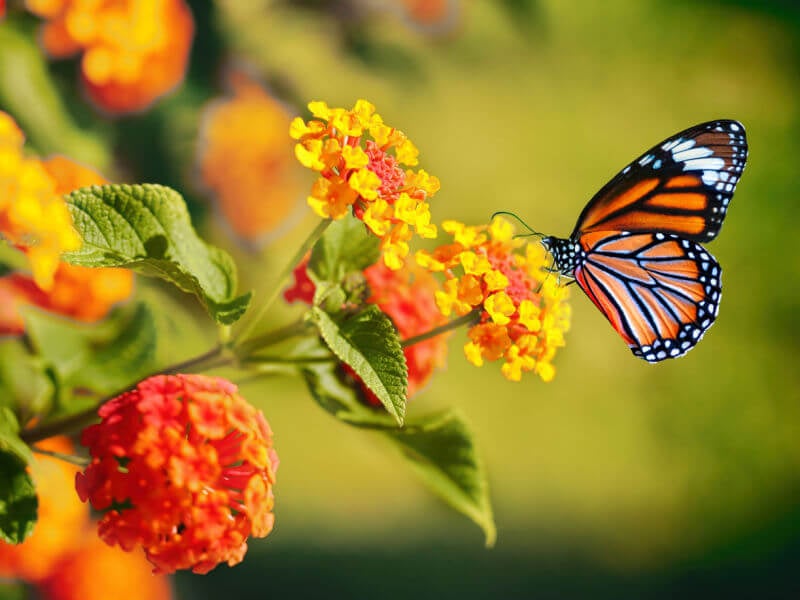Home gardeners nationwide embrace native plants for their beauty, resilience, and eco-friendly benefits. Native plants originated and evolved in your region, so they are perfectly adapted to the local climate. That means a garden filled with native perennials can thrive with minimal effort while supporting local wildlife. In this article, we’ll explore why planting native species is a wise choice and highlight some beautiful, hardy native plants (many from TN Nursery’s perennial collection) that are perfect for home gardens.

Native plants offer a win-win for gardeners and the environment. Here are some key benefits of incorporating native perennials into your home landscape:
Support Pollinators and Wildlife:
Native flowers are especially rich in nectar and pollen, making them a feast for bees, butterflies, hummingbirds, and other pollinators usda.gov . By planting natives, you’re creating habitat and food for local wildlife. For example, many native plants serve as host plants for butterfly larvae (caterpillars), meaning butterflies lay eggs on them and their caterpillars feed on the leaves. A famous case is the monarch butterfly – its caterpillars can only eat milkweed, so milkweed is essential to their life cycle . By growing native species like milkweed, coneflowers, and asters, you’ll enjoy a garden buzzing with pollinators and songbirds coming to eat the seeds or insects those plants support.
Low Maintenance Needs:
Because they evolved in the local environment, native plants practically take care of themselves. They are accustomed to your region’s rainfall and soil, so you don’t need to water or fertilize them as much as non-native ornamentals realsimple.com . Natives are also generally pest-resistant and disease-resistant usda.gov , reducing the need for pesticides. Many are perennials that come back every year on their own. They can even handle tough conditions – drought-tolerant and able to grow in poor soils in many cases americanmeadows.com . For busy home gardeners or those new to gardening, this easy-care nature means less time and money spent on upkeep, without sacrificing a lush garden.
Environmental Benefits:
Planting native perennials makes your garden more sustainable. Deep-rooted natives help prevent erosion and improve soil health usda.gov . They often have lower water requirements, helping conserve water during dry spells. By avoiding heavy fertilizer or pesticide use, you keep harmful chemicals out of the environment.
Moreover, a yard with diverse native plants contributes to the local ecosystem’s biodiversity, creating a small haven for species that belong in the area. In short, native plant gardens are not just beautiful – they actively support a healthier environment by working with nature rather than against it.
With these advantages in mind, it’s easy to see why native plants are a fantastic choice. The good news is that “going native” doesn’t mean sacrificing color or curb appeal. There is a huge variety of gorgeous native perennials available — many of which you can find at TN Nursery’s perennial plants collection — suited for different garden styles, from wildflower meadows to formal flower beds. Here are some top picks for beautiful and resilient native plants to consider:
Native Plant Benefits to Consider
Below are a few standout native perennials (from TN Nursery’s collection) that can elevate your home garden with color, fragrance, and vitality. These plants are not only visually striking but also hardy and beneficial to local fauna.
Clusters of pink milkweed blossoms attract butterflies. Milkweed is a must-have native plant if you want to support butterflies. Its vibrant flower clusters (which can be pink, orange, or white depending on the species) are filled with nectar that draws bees and butterflies in droves.
Most importantly, milkweed is the sole host plant for monarch butterfly caterpillars – monarchs will lay eggs only on milkweed, and the emerging caterpillars feed exclusively on its leaves gardenforwildlife.com . By planting milkweed, you provide critical habitat for these beloved butterflies. Milkweeds are also very hardy perennials. They thrive in sunny spots and don’t require much babying: once established, they tolerate drought and poor soils well .
Common Milkweed and Butterfly Weed (an orange-blooming milkweed) are popular varieties. Plant them in a sunny border or wild corner of your yard and enjoy watching monarchs flutter about all summer.
Purple coneflower (Echinacea) blooms are magnets for bees and butterflies
The Purple Coneflower is one of the best-known native perennials, and for good reason. Its large daisy-like blooms — usually bright purple-pink petals surrounding an orange cone center — are not only eye-catching but also rich in nectar. Bees and butterflies flock to coneflowers when they bloom in mid-summer, and later the dried seed heads will attract songbirds (like goldfinches) that love to snack on the seeds.
This plant is as tough as it is beautiful: coneflowers are drought-tolerant and thrive in poor, well-draining soil, requiring very little maintenance americanmeadows.com . They are native to the eastern U.S. prairies and meadows, so they handle heat and humidity with ease.
Coneflowers grow about 2-4 feet tall, making them great mid-border or background plants. Deadheading spent flowers can prolong blooming, but you can also leave some seed heads on for the birds. If you want an easy-care flower that provides months of color and supports wildlife, Echinacea is a perfect choice.
Black-Eyed Susan (Rudbeckia) Cheerful yellow black-eyed Susans blooming in summer
Black-Eyed Susans are iconic native wildflowers that will light up your garden with masses of golden-yellow blooms. These hardy perennial flowers (often grown as biennials or short-lived perennials) have dark “eyes” at the center and bright ray petals, resembling miniature sunflowers.
Black-eyed Susans bloom profusely through summer and into fall, providing a long season of color
Pollinators such as butterflies, bees, and hoverflies eagerly visit the blooms for nectar and pollen. Like many natives, Rudbeckia is easy to grow and tolerant of a range of conditions – it prefers full sun but can handle partial shade, and it’s drought-tolerant once established.
Black-eyed Susans also self-seed modestly, often creating a naturalized drift of yellow year after year without much effort on your part. In fall, if you leave the seed heads standing, they can provide food for birds (for example, finches will perch and pick out the seeds). Plant Black-eyed Susans en masse for a striking effect, or mix them with purple coneflowers and grasses for a classic wildflower meadow look. They are fantastic for beginners and veteran gardeners alike
Cardinal Flower (Lobelia cardinalis) Cardinal Flower brings a splash of vivid red to the garden and is a hummingbird’s delight
This red lobelia bears spikes of brilliant red, tube-shaped flowers that bloom in late summer. The blooms are an important nectar source for hummingbirds and swallowtail butterflies prairiemoon.com – you’ll often see hummingbirds zipping from one scarlet flower to the next. Cardinal flower grows well in moist, rich soils and is commonly found in nature near streams or wet meadows. In the garden, it’s perfect for a rain garden, beside a pond, or any area that stays moderately moist. It can tolerate full sun if the soil stays damp, otherwise it appreciates part shade, especially in hotter climates.
Cardinal flower typically grows 2-3 feet tall. Its foliage is deep green, sometimes with a bronzy tint, which sets off the red flowers even more. While cardinal flower can be somewhat short-lived, it will often reseed nearby to establish new plants. By planting a group of these, you’ll not only get a dazzling display of red blooms but also help hummingbirds fuel up during the summer. It’s an excellent choice for gardeners wanting a showy native plant for a wet or semi-shaded spot.
Creeping Phlox (Phlox subulata) Creeping Phlox (also called moss phlox) is a wonderful native groundcover that provides a carpet of color in spring. This low-growing perennial spreads to form mats of needle-like evergreen foliage, which in mid-spring get covered in starry flowers of pink, purple, or white.

If you have a slope, rock garden, or border edge to fill, creeping phlox is ideal – it will cascade nicely over rocks or walls and help prevent soil erosion on slopes with its dense root system. Pollinators like honeybees and early spring butterflies will visit the blooms for nectar. Creeping phlox thrives in full sun and well-drained soil.
It’s very winter-hardy and comes back reliably each year, gradually expanding its patch. Once flowering is done, the green mat of foliage remains attractive through the season, and you can shear it back lightly to keep it tidy. This native phlox is low-maintenance (just ensure it doesn’t sit in waterlogged soil) and will reward you with masses of blooms each spring. It’s a great native alternative to exotic groundcovers, bringing both beauty and ecological value to your garden’s foundation plantings.
Virginia Bluebells (Mertensia virginica) Virginia Bluebells are a charming native plant for shady gardens and woodland areas. In early to mid-spring, bluebells erupt with clusters of pendulous bell-shaped flowers that start out pink and then turn a lovely sky-blue as they open. These blooms add rare blue tones to the spring garden and are eagerly visited by bumblebees and other early pollinators.
Virginia bluebell plants reach about 1-2 feet tall and form clumps. They prefer partial shade to full shade and moist, rich soil (mimicking a forest floor). In the wild, you’ll find them in deciduous woods and along shaded streams. An interesting aspect of bluebells is that they are spring ephemerals – they do all their growing and blooming in spring and then go dormant by summer, disappearing until the next year.
This makes them perfect companions for ferns and other shade perennials that leaf out later. Bluebells are easy to grow in the right conditions and will spread gently over time by self-seeding, creating a naturalized colony. They bring a touch of wild woodland magic to any shady nook, and being natives, they fit seamlessly into the local ecosystem.
Plant Virginia bluebells under trees or along shaded garden paths, and enjoy their tranquil beauty each spring.
Embrace Native Plants for a Thriving Garden Switching to native plants is one of the best moves a home gardener can make for long-term success and sustainability
Native plants not only fill your garden with stunning blooms and foliage, but they also create a healthy mini-ecosystem right in your backyard. From butterflies dancing around milkweed and coneflowers, to hummingbirds sipping from cardinal flowers, to hardy groundcovers and woodland blooms, natives offer something for every garden setting.
They’ll reward you with color and life year after year with minimal maintenance, as they are truly built to thrive in your region realsimple.com . By choosing natives (many of which are available through TN Nursery’s perennial plant collection), you’re supporting your local environment and enjoying a gorgeous, easy-care garden at the same time. So, dig in and start planting native species – your garden, and the pollinators, will thank you!






